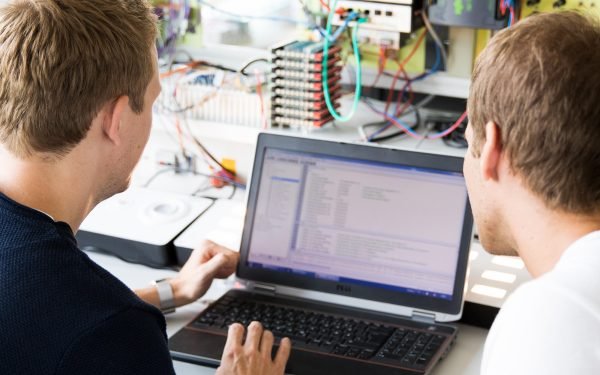The Art of AB Testing Improving Your Facebook Like Rate

In social media marketing, one of the crucial criteria to measure the success of your Facebook runner is the Like Rate. The number of likes your posts admit not only reflects the fashionability and engagement of your content but also plays a significant part in expanding the reach of your brand. A/ B testing, also known as split Testing, is a vital fashion that allows you to experiment with different variations of your Facebook content to identify the most effective strategies for adding your Like Rate. In this composition, we will explore the art of A/ B testing for Facebook Like Rate enhancement and give you practical perceptivity and strategies to optimize your Facebook presence.
1 – Preface to A/ B Testing for Facebook Like Rate Improvement
1.1 – Defining A/ B Testing
A/ B testing is like conducting a wisdom trial for your Facebook runner. You produce two performances of a post, the original interpretation( A) and a slightly tweaked interpretation( B), and show them to your followership to see which one performs better in terms of getting likes. It’s each about testing different approaches to find out what resonates with your following and gets them hitting that like button.
1.2 – Why A/ B Testing is Important for Facebook Like Rate
You might be wondering, “Why should I think about this? Is it too late to share a hilarious cat video and call it a day? Yes, you could do that, but A/B testing is your secret weapon if you’re serious about increasing your like rate and Facebook visibility. It enables you to optimize your content for maximum interaction and form opinions based on statistics. Who wouldn’t want to see that count skyrocket, too?
For more information about facebook likes Click here.
2 – Understanding the significance of Facebook Like Rate
2.1 – The part of Likes in Social Media Marketing
Likes are like gold coins in the realm of social media marketing. They indicate that people not only saw your post but they also took the time to give it a virtual thumbs-up. Likes show that your content reverberates with your followership and can help your post reach a wider following through organic reach and algorithmic magic.
2.2 – Benefits of a High Facebook Like Rate
A high like rate on Facebook is like winning the fashionability contest of the internet. It boosts your credibility, increases brand mindfulness, and drives more business to your website. Plus, when someone sees that a post has a ton of likes, they are more likely to jump on the crusade and give it a like, too.
3 – Planning and Designing A/ B Tests for Facebook Like Rate
3.1 – Relating key Metrics and objects
Before diving into A/ B testing, you must define what you want to achieve quickly. Are you aiming for further likes? Further commentary? Further shares? Identify the crucial criteria you wish to facilitate and set specific objects for your A/ B tests. This way, you will know precisely what you aim for and can measure your success.
3.2 – Formulating suppositions for A/ B Testing
Creating variations for your A/ B tests is like playing a frenetic scientist. But do not worry, it’s all in the name of perfecting your suchlike rate. Start by formulating suppositions and educated suppositions about which rudiments might increase engagement. For illustration, you might hypothecate that changing the caption or adding a compelling image will affect further likes.
3.3 – Creating Variations for A/ B Testing
Once you’ve got your suppositions ready, it’s time to produce the variations for your A/ B tests. For each thesis, make an interpretation B different from your original interpretation A in one specific element. This could be anything from the post’s wording to the color scheme of the accompanying image. Just make sure the changes are easily distinguished to track the impact directly.
4 – Enforcing A/ B Tests and Gathering Data on Facebook Like Rate
4.1 – Setting up A/ B Test trials
Now comes the delightful part of setting up your A/ B test trials. Choose a sample size that is statistically significant and randomize the exposure of your variations to your followership. This means showing interpretation A to some people and interpretation B to others. This way, you can compare their performance and determine which one has the magic touch regarding likes.
4.2 – Tracking and Collecting Applicable Data
To make sense of your A/ B test results, you will need to track and collect applicable data. Use Facebook perceptivity or other analytics tools to cover the performance of your posts and keep an eye on those like counts. Record the data for both interpretation A and interpretation B, and remember to track any other criteria that are important to your objects.
4.3 – Ensuring Statistical Significance
Statistical significance is like the holy grail of A/ B testing. It tells you whether the differences you observe between interpretation A and interpretation B are actually meaningful or just a strike. Do not worry, and you do not need to smoke off your old statistics handbooks for this. Some online calculators and tools can help you determine if your results are statistically significant.
5 – Assaying A/ B Test Results for Facebook Like Rate Improvement
5.1 – Statistical Analysis of A/ B Test Data
When it comes to A/ B testing, figures do not lie. Assaying the data from your A/ B tests is an essential step in understanding the impact of your variations on the Facebook-like rate. Take a deep dive into the figures and look for statistical significance. Do not worry if statistics is not your strong suit, and tools are abundant to help you crunch the figures.
5.2 – Comparing Conversion Rates and Like Rates
While perfecting your Facebook-like rate is the primary thing of your A/ B tests, remember to dissect the impact on conversion rates. Occasionally, what works for getting further likes may not inescapably drive transformations. Find the right balance between the two and make data-driven opinions grounded on your findings.
5.3 – Relating Successful Variations
Not all variations in your A/ B tests will be winners. It’s essential to identify the variations that have a significant impact on your Facebook like rate. Look for patterns, dissect the data, and identify the variations that constantly outperform others. These are the golden nuggets that should be further optimized and enforced.
6 – Optimizing Facebook Like Rate Grounded on A/ B Test Perceptivity
6.1 – Enforcing Successful Variations
Once you’ve linked the successful variations from your A/ B tests, it’s time to put them to work. Apply these variations across your Facebook runners and posts to ease your suchlike rate—flashback to keep track of the changes and cover their impact on your criteria.
6.2 – Iterating and Refining Test Variations
A/ B testing is not a one-and-done deal. It’s an ongoing process of constant enhancement. Use the perceptivity gained from your A/ B tests to upgrade and reiterate your test variations. Test new ideas, trial with different approaches, and keep refining until you find the winning formula that constantly boosts your Facebook-like rate.
7 – Stylish Practices for A/ B Testing on Facebook Like Rate
7.1 – Testing One Variable at a Time
To get conclusive results from your A/ B tests, concentrate on testing one variable at a time. By making insulated changes, you can directly measure their impact on the Facebook-like rate. It’s tempting to throw everything but the kitchen Gomorrah into your tests, but flashback: simplicity is crucial to effective Testing.
7.2 – Segmenting Followership for Testing
Rather than testing your entire followership, consider segmenting your following to get further targeted results. Different parts may respond to variations, so trying on specific groups can give precious perceptivity into what works best for each member. It’s like getting a knitter-made suit rather than a one-size-fits-all-.
7.3 – Monitoring and Tracking A/ B Test Performance
Keep a close eye on the performance of your A/ B tests. Track the criteria, cover the results, and keep up with any changes. Regularly checking in on how your variations are performing will allow you to identify any issues and make necessary adaptations quickly. Flashback: Testing is an ongoing process, not a set-it-and-forget-it affair.






